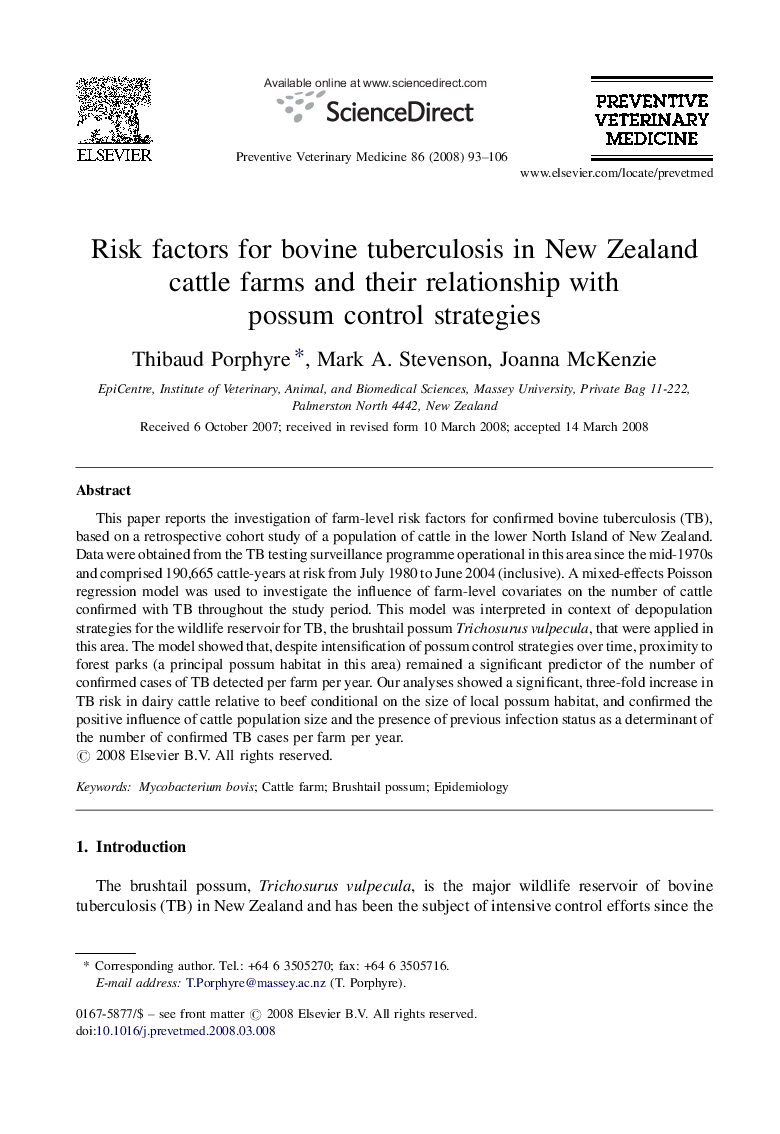| Article ID | Journal | Published Year | Pages | File Type |
|---|---|---|---|---|
| 2453222 | Preventive Veterinary Medicine | 2008 | 14 Pages |
This paper reports the investigation of farm-level risk factors for confirmed bovine tuberculosis (TB), based on a retrospective cohort study of a population of cattle in the lower North Island of New Zealand. Data were obtained from the TB testing surveillance programme operational in this area since the mid-1970s and comprised 190,665 cattle-years at risk from July 1980 to June 2004 (inclusive). A mixed-effects Poisson regression model was used to investigate the influence of farm-level covariates on the number of cattle confirmed with TB throughout the study period. This model was interpreted in context of depopulation strategies for the wildlife reservoir for TB, the brushtail possum Trichosurus vulpecula, that were applied in this area. The model showed that, despite intensification of possum control strategies over time, proximity to forest parks (a principal possum habitat in this area) remained a significant predictor of the number of confirmed cases of TB detected per farm per year. Our analyses showed a significant, three-fold increase in TB risk in dairy cattle relative to beef conditional on the size of local possum habitat, and confirmed the positive influence of cattle population size and the presence of previous infection status as a determinant of the number of confirmed TB cases per farm per year.
